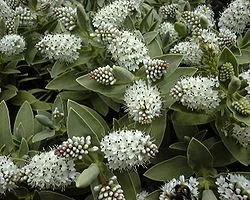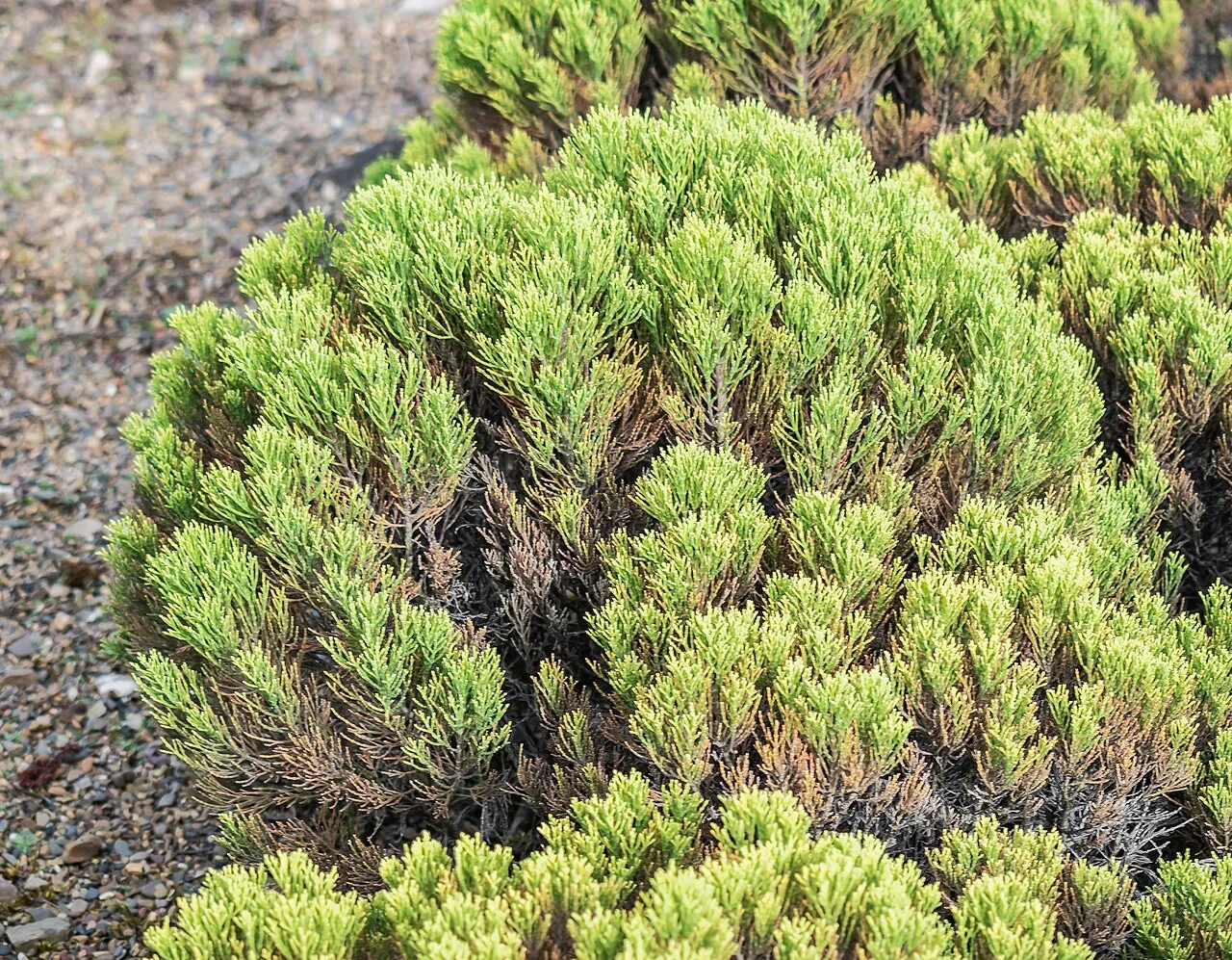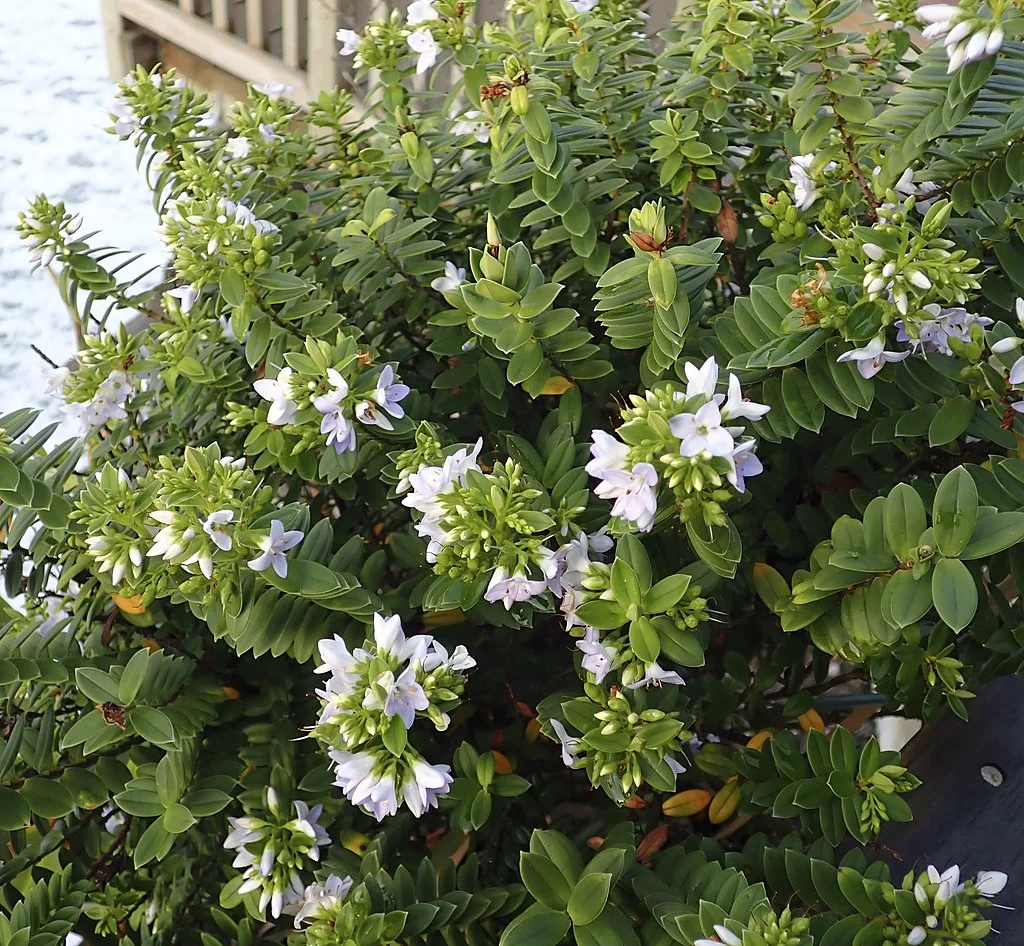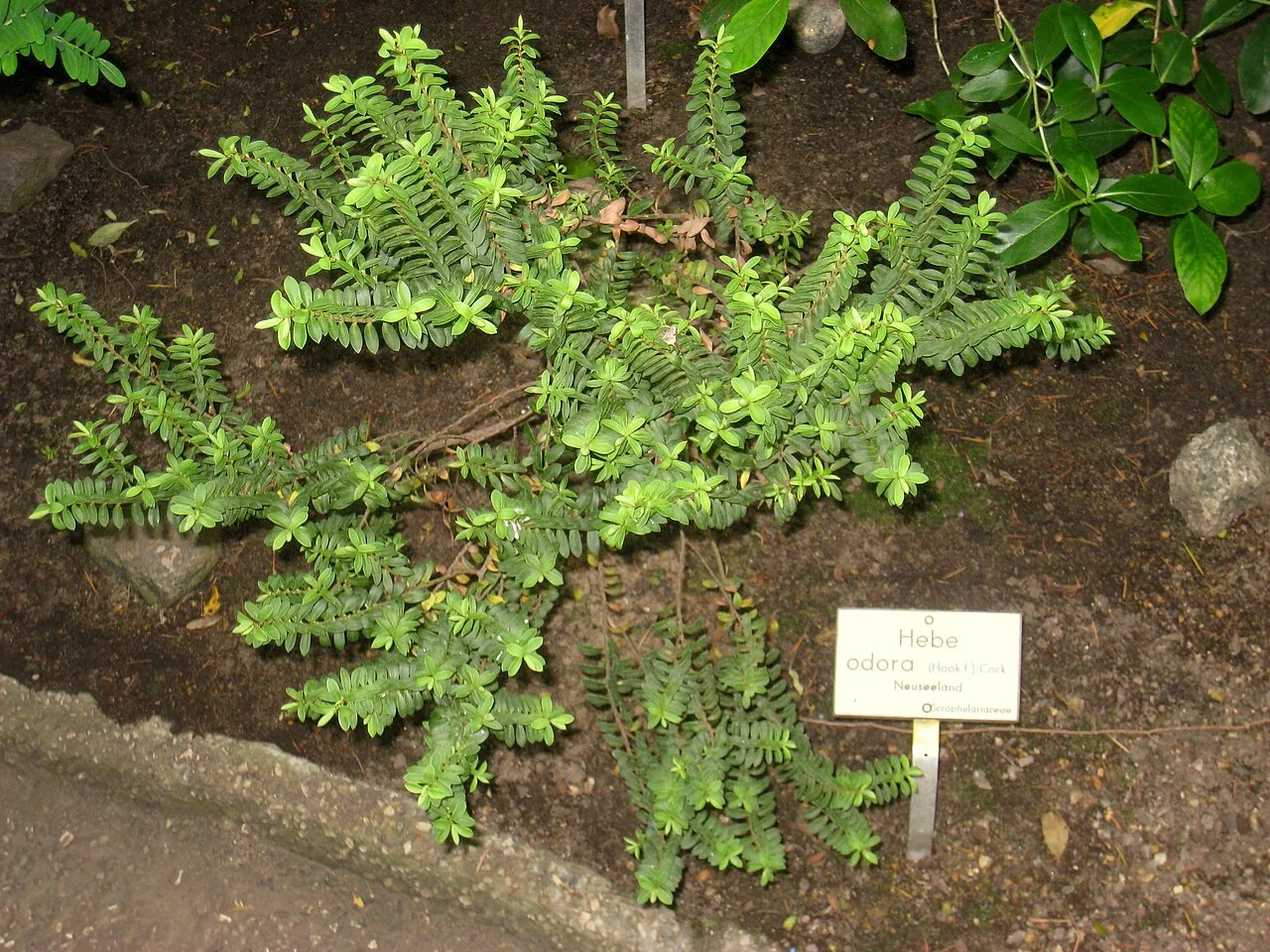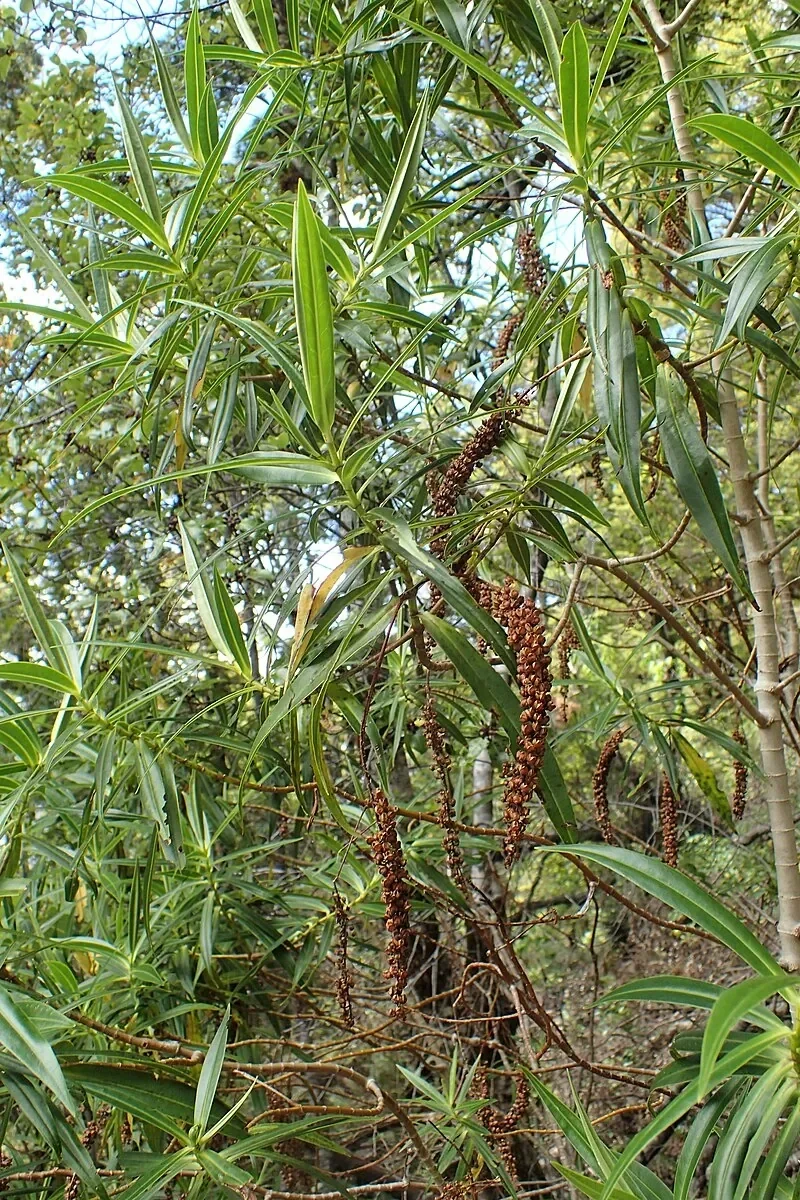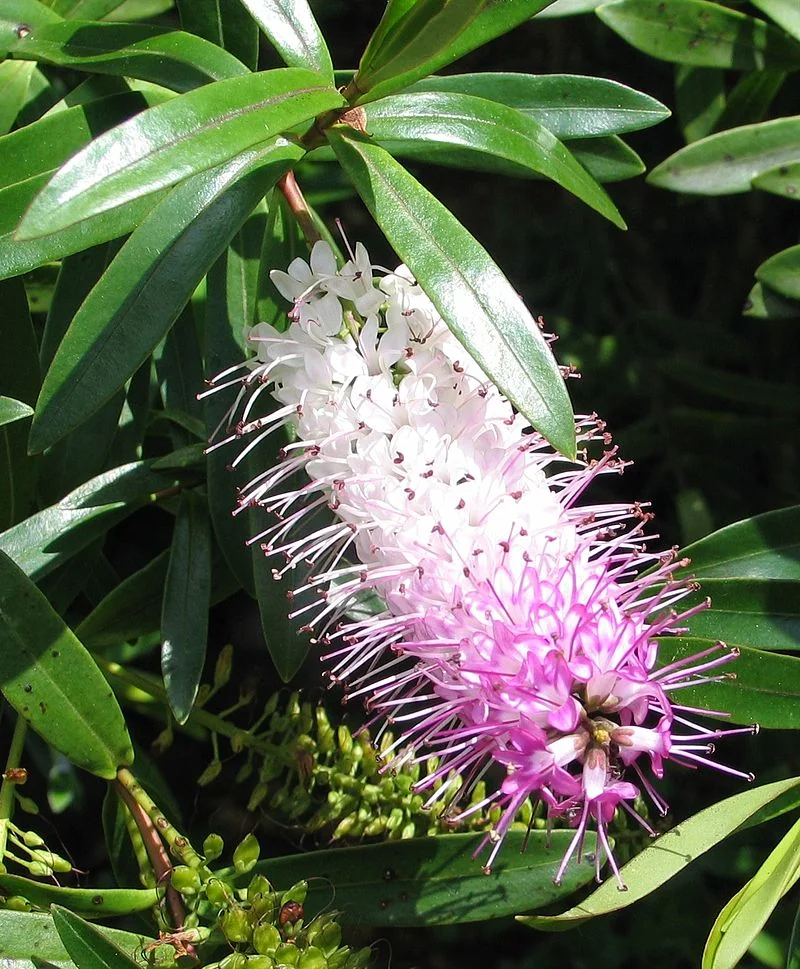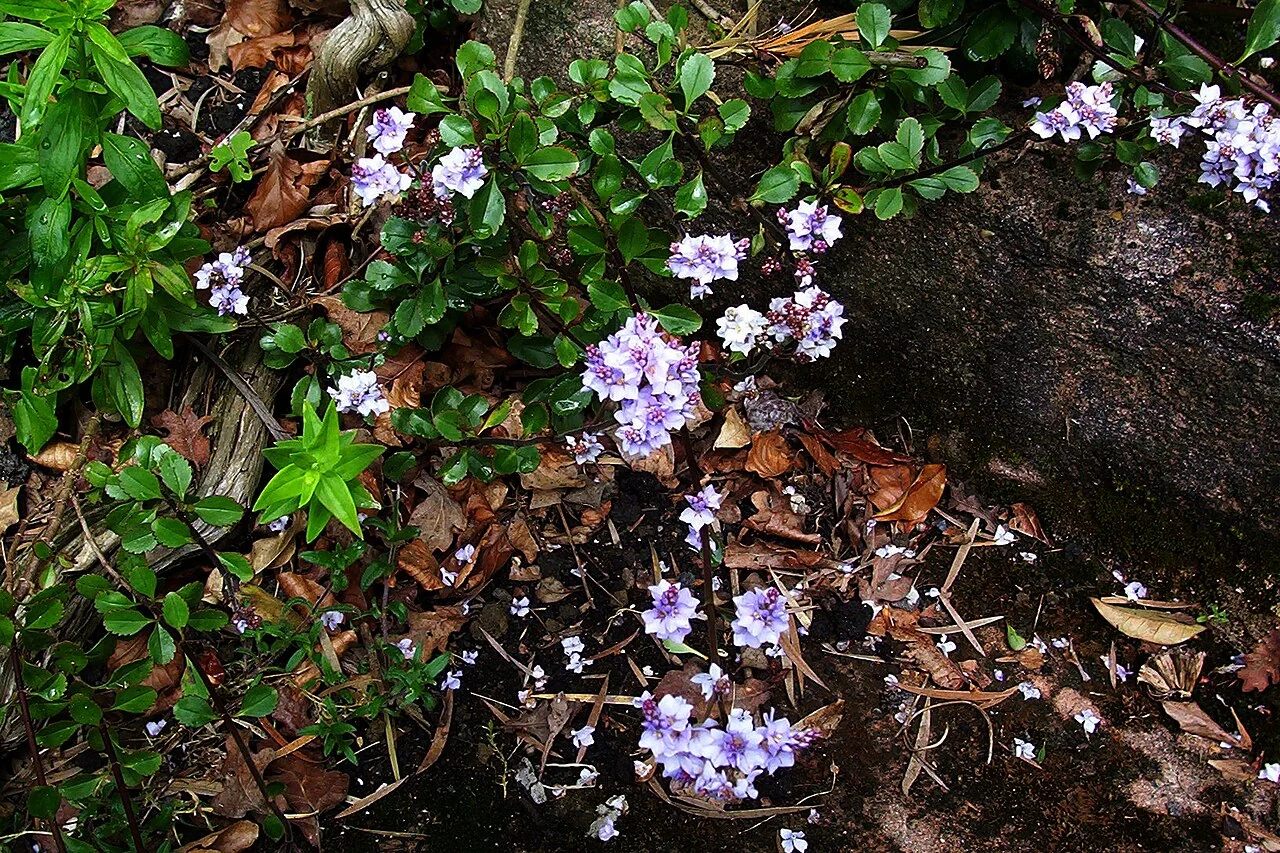
Fairy Foxglove
Veronica hulkeana
Introduction
Fairy Foxglove (scientific name: Veronica hulkeana ) is one of New Zealand's most spectacular native flowering shrubs, producing magnificent sprays of delicate lilac-blue flowers that bloom in profusion during spring and summer. This graceful shrub, also known as New Zealand Lilac, is prized for its elegant branching habit and distinctive serrated leaves. Endemic to the South Island, it's a cherished garden plant that brings ethereal beauty to native landscapes. Explore more in the native plants index .

Plant Description
Botanical Features
Fairy Foxglove ( Veronica hulkeana ), also commonly known as the New Zealand lilac, is a bushy small shrub belonging to the Plantaginaceae family. It is an endemic species native to the dry, rocky areas of the northeastern South Island of New Zealand, often found on cliffs and bluffs up to an altitude of 900 m. This plant is characterized by its dark green, glossy, fleshy, oval to elliptic leaves, which are typically 20-45mm long and 10-20mm wide, often with reddish margins and finely toothed edges. The twigs are fuzzy when young. One of its most striking features is its abundant display of pale mauve, lavender, or lilac-coloured flowers. These dainty flowers are produced in large, branching panicles, sometimes up to 50cm long, that terminate the shoots. The flowering period typically lasts from October to December or May to June, depending on the source and potentially location.
Quick Facts
Essential Information
| Scientific Name | Veronica Hulkeana |
|---|---|
| Height | 60 - 100 cm |
| Spread | 60 - 100 cm |
| Water Needs | Low; requires excellent drainage |
| Light | Full sun |
| Frost Tolerance | Moderate to high; protect from severe frosts |
| Salt Tolerance | Moderate |
| Growth Rate | Moderate |
| Lifespan | Shrub |
Climate Best Suited to
Native to Marlborough and North Canterbury in the South Island, this hebe thrives in dry, sunny climates with low humidity. It is well-suited to gardens in eastern parts of New Zealand but can be grown elsewhere if given a warm, sheltered site with perfect drainage.
Regional Suitability
| Whangārei | Ideal |
| Auckland | Ideal |
| Hamilton | Suitable |
| Rotorua | Suitable |
| Tauranga | Ideal |
| Gisborne | Ideal |
| New Plymouth | Ideal |
| Whanganui | Ideal |
| Palmerston North | Suitable |
| Napier | Ideal |
| Wellington | Ideal |
| Nelson | Ideal |
| Christchurch | Suitable |
| Dunedin | Suitable |
| Invercargill | Suitable |
| City | Climate Suitability |
|---|
Natural Habitat
Fairy Foxglove ( Veronica hulkeana ), also known as the New Zealand lilac, is a bushy small shrub endemic to the South Island of New Zealand. Its natural habitat is primarily in the northern and northeastern parts of the South Island, where it grows in dry, rocky areas.
Key Habitats Include:
- Dry, Rocky Areas: It is commonly found in rock outcrops, cliffs, and gorges, and occasionally in alluvial gravel. This indicates its preference for well-drained, rocky, and exposed sites.
- Altitude: It can be found at elevations ranging from 5 to 1281 meters, showcasing its adaptability across a significant altitudinal range.
- Substrates: It grows on diverse substrates such as limestone, greywacke, and conglomerate.
Preferred Conditions:
- Full Sun to Partial Shade: It performs best in full sun to partial shade, reflecting its natural growing conditions.
- Well-Drained Soil: It thrives in very well-draining, rocky or sandy soil.
- Low Humidity: It is well-suited to climates with low humidity.
The presence of Veronica hulkeana in these specific habitats underscores its ecological importance in contributing to the biodiversity and unique flora of New Zealand's mountainous regions.
Plant Conservation
Veronica hulkeana , also known as New Zealand lilac, is a bushy small shrub endemic to the South Island of New Zealand. Its conservation status varies by subspecies. Veronica hulkeana subsp. hulkeana was assessed as "Not Threatened" in 2023. Veronica hulkeana subsp. evestita was previously classified as "At Risk - Naturally Uncommon" in 2009, 2012, and 2017. The plant thrives in river gorges, coastal cliffs, and rock outcrops, and is considered cold-hardy and relatively easy to grow in well-drained, light soil and an open, sunny position.
Growing Requirements
Soil Requirements
Fairy Hebe ( Veronica hulkeana ) thrives in very well-draining, rocky or sandy soil. Understanding its natural habitat in cliff faces and rocky outcrops helps guide successful cultivation.
- Natural habitat: cliff faces and rocky outcrops
- Soil preference: very well-draining, rocky or sandy soil
- Good drainage important for healthy root development
- Benefits from organic matter incorporation where appropriate
- Avoid conditions that differ significantly from natural habitat
Light Requirements
Fairy Hebe ( Veronica hulkeana ) performs best in full sun to partial shade. This reflects its natural growing conditions and ensures optimal growth and health.
- Preferred light conditions: full sun to partial shade
- Plant in position that mimics natural habitat
- Consider seasonal light changes in garden placement
- Protect from extreme conditions if necessary
Water Requirements
Fairy Hebe ( Veronica hulkeana ) has low, very drought-tolerant. Understanding these needs ensures successful establishment and long-term health.
- Water requirements: low, very drought-tolerant
- Regular watering important during establishment
- Adjust watering to match natural habitat conditions
- Monitor for signs of water stress
- Mulching can help maintain appropriate soil moisture
Planting Guide
Veronica hulkeana , also known as New Zealand lilac, is a beautiful shrub with pale mauve flowers that bloom from October to December. It is considered cold-hardy and relatively easy to grow if its specific needs are met.
Location and Soil:
- Sunlight: Veronica hulkeana thrives in an open, sunny position, preferably against a sunny wall. It needs at least six hours of direct sun per day.
- Soil: It requires well-drained, light, and rubbly soil. Poor drainage can lead to issues like root rot. Adding grit to the soil during planting or mulching annually can improve soil structure.
- Shelter: In areas prone to late frosts, planting in a sheltered, warm spot or growing it in a pot is advisable, as late frosts can prevent flowering.
Planting and Care:
- Planting Time: If sowing seeds in a garden, do so from mid-spring to late spring.
- Watering: After sowing seeds, water once and cover the surface with plastic film. Once established, Veronica hulkeana can tolerate some drought, but occasional watering during peak bloom time is recommended to prolong flowers.
- Germination: Seeds can germinate in approximately 30 days. Provide appropriate shade after sowing to prevent sun exposure.
- Fertilizing: A slow-release, balanced fertilizer in spring can help the plant emerge from dormancy.
- Pruning: Minimal pruning after flowering helps keep the shrub tidy. It's advisable to remove faded flower panicles to prevent the plant from weakening due to excessive seed-setting.
- Overwintering: Young plants raised from autumn cuttings may need to be overwintered in a frost-free greenhouse or frame.
Characteristics:
- Veronica hulkeana is a loose-habited, straggling shrub that can reach 4 to 6 feet in height, or more when grown against a wall.
- It has dark green, shiny, elliptic to obtuse leaves, 7-10 cm long and 2-3 cm wide.
- The plant provides nectar and pollen for bees and other pollinating insects.
Ecological Role
Limestone Bluff Hebe
NZ lilac thrives on sunny, limestone bluffs in North Canterbury; its showy mauve panicles feed pollinators, while the branching framework provides perches and shelter for invertebrates.
Uses and Significance
Landscaping Applications
- Specimen Plant: Its stunning floral display makes it an outstanding feature plant.
- Rock and Gravel Gardens: Perfectly suited to the conditions of a well-drained rock or gravel garden.
- Dry Banks: Ideal for planting on a sunny, dry bank or slope.
- Container Planting: Can be grown in a container, provided the potting mix is very free-draining.
Cultural Significance
Traditional Uses and Values
While Veronica hulkeana , also known as New Zealand lilac, is recognized for its attractive flowers, specific cultural significance directly attributed to this particular species is not extensively documented. The genus name "Veronica" is often associated with Saint Veronica, who, according to tradition, offered Jesus her veil to wipe his brow. The name is sometimes believed to derive from the Latin "vera iconica" meaning "true image," though its actual origin is from the Macedonian name Berenice, meaning "bearer of victory." This etymology, however, applies to the broader genus Veronica and not specifically to Veronica hulkeana .
Landscaping Ideas
Sunny, Free-Draining Slopes
NZ lilac excels on limestone or free-draining soils with full sun. Use as a showpiece shrub; prune lightly after flowering to maintain shape and encourage fresh wood for next season's bloom.
Seasonal Care Calendar
Spring
Spring is an active growth period for Fairy Hebe ( Veronica hulkeana ). New growth emerges and this is an ideal time for planting new specimens. Monitor soil moisture as temperatures warm and growth accelerates.
- Active growth period with new development
- Ideal time for planting new specimens
- Monitor soil moisture as growth increases
- Apply organic mulch if needed
Summer
Summer is typically the main growing season for Fairy Hebe ( Veronica hulkeana ). Late winter to spring flowering occurs during this period. Ensure adequate watering during hot, dry periods according to the plant's specific needs.
- Peak growing season with active development
- Monitor watering needs during hot weather
- Flowering period: late winter to spring
- Established plants show good heat tolerance with appropriate care
Autumn
During autumn, Fairy Hebe ( Veronica hulkeana ) begins to slow its growth as temperatures cool. This is another good time for planting as conditions become more favorable. Reduce watering frequency but maintain appropriate soil moisture.
- Growth slows as temperatures moderate
- Good time for planting new specimens
- Reduce watering frequency gradually
- Maintain appropriate soil moisture for species
Winter
Winter is typically a dormant period for Fairy Hebe ( Veronica hulkeana ), with minimal growth activity. Reduce watering but ensure plants don't completely dry out if they require consistent moisture. Most New Zealand natives are cold-hardy.
- Dormant period with minimal growth activity
- Adjust watering to seasonal needs
- Generally cold-hardy in most New Zealand climates
- Minimal winter protection required for most natives
When to Prune and How Much
Overview
Fairy Hebe ( Veronica hulkeana ) generally requires minimal pruning to maintain its natural form and health. Most maintenance involves removing dead or damaged growth and light shaping if needed.
- Remove dead, damaged, or diseased growth as needed
- Light pruning to maintain shape if desired
- Prune after flowering if applicable
- Avoid heavy pruning which can stress the plant
- Use clean, sharp tools to prevent disease
- Most natives maintain good form without regular pruning
Always use clean, sharp tools when pruning to minimize disease risk. Native plants typically maintain their natural form well and often require less intervention than exotic species.
How to Grow Fairy Foxglove
New Zealand Lilac is a stunning and highly sought-after shrub, renowned for its large, lilac-like panicles of flowers. While it is a spectacular garden plant, it has specific requirements that must be met for it to thrive. It is best suited to cooler climates with low humidity and requires excellent drainage. In the right conditions, it is a relatively low-maintenance plant that will reward the gardener with a breathtaking floral display in late spring and early summer.
From Cuttings
The most reliable method for propagating New Zealand Lilac is from semi-hardwood cuttings taken in late summer or autumn. Select healthy, non-flowering shoots and take cuttings of about 6-8 inches in length. Remove the leaves from the lower half of the cutting and dip the base in a rooting hormone to improve the strike rate. Plant the cuttings in a free-draining, gritty compost mix. Place the cuttings in a cold frame or a sheltered, shady spot and keep the compost moist. Rooting can be slow, but with patience, the cuttings will establish a healthy root system. This method ensures that the new plants will be identical to the parent plant.
From Seed
Growing New Zealand Lilac from seed is also possible, although the resulting plants may show some variation. It is best to use fresh seed, sown in autumn in a seed tray filled with a well-draining seed-raising mix. The seeds do not require any pre-treatment, but germination can be slow and erratic. Place the seed tray in a cold frame or a sheltered outdoor location where it will be exposed to natural temperature fluctuations. This period of cold stratification can help to improve germination rates. Once the seedlings are large enough to handle, they can be pricked out and potted into individual containers to grow on.
Pests and Diseases
Drainage Is Key
The main issue is root rot, caused by poor drainage or excessive watering. In humid climates, it can be susceptible to downy mildew. Generally, it is pest-free.
Bonus Tip
Expert Growing Advice
New Zealand lilac ( Veronica hulkeana ) benefits from a warm wall or rock face in cool districts. Train young stems laterally to encourage spur flowering the following spring.
